Make beautiful craft paper: How to build a paper recycling kit
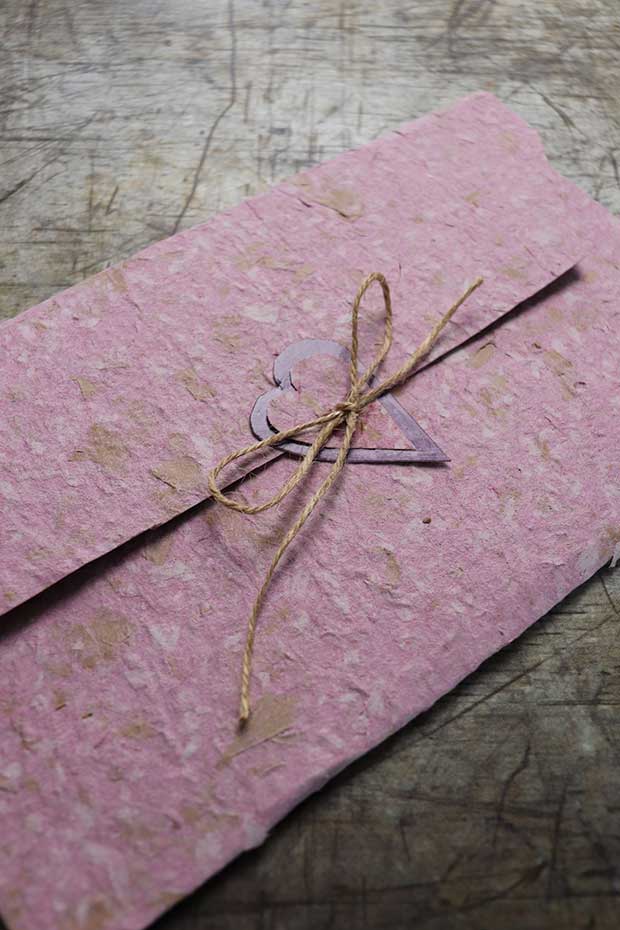
Making handmade paper from recycled paper is fun and a relatively easy process. It’s a great way to give junk mail, used packaging paper and even cardboard egg cartons, a new lease of life.
Words and Photos: Julie Legg
To handcraft paper from scraps will require a mould and deckle to help strain and form the paper pulp into a tidy sheet.
The equipment can be easily assembled with two equal sized frames – one with a mesh back to strain the pulp, the other a frame that sits over the first to define the paper edges. Upcycle where possible – old picture frames are perfect.
FOR THIS PROJECT YOU’LL NEED:
2 x wooden picture frames of the same size
Flyscreen or fine mesh
Staple gun
Stanley knife
Duct tape
Spare wood offcuts
Handful of small screws
Paper to recycle
Water
Food processor
Large tub
Absorbent cloth
Grease-proof paper
How to make a mould and deckle
STEP 1. Select two wooden picture frames of identical size. Remove any backing, glass, metal hooks and catches.
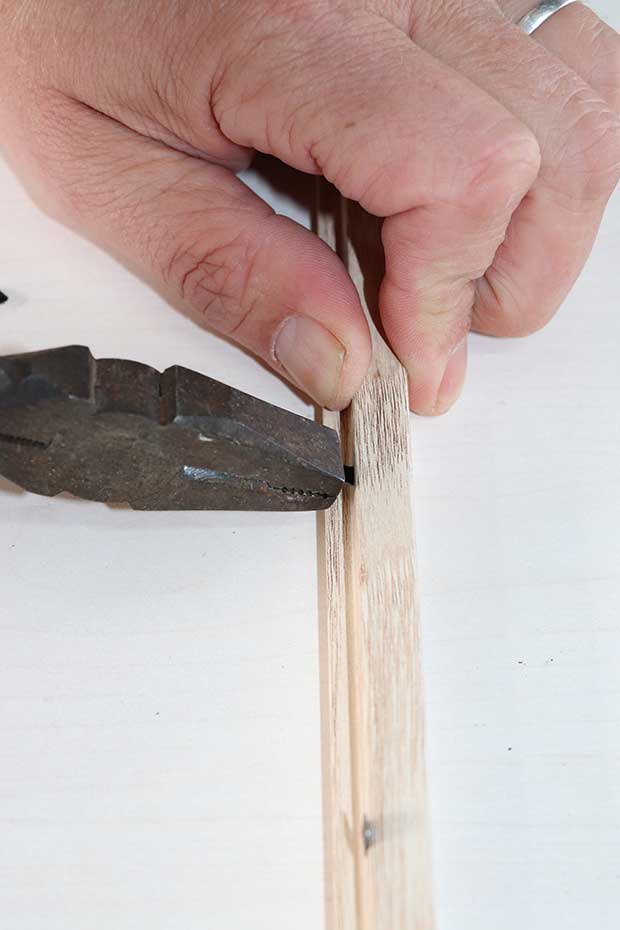
STEP2. On one frame only, flat side up, staple fine mesh onto the frame. This becomes the deckle.
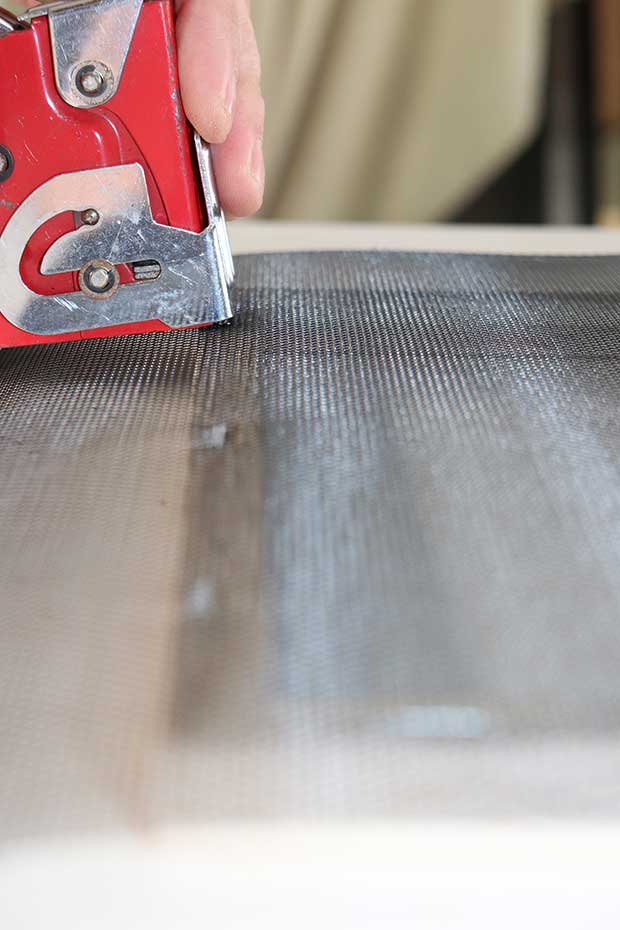
STEP 3. Cut away any excess mesh so sides become flush to the outside of the frame.
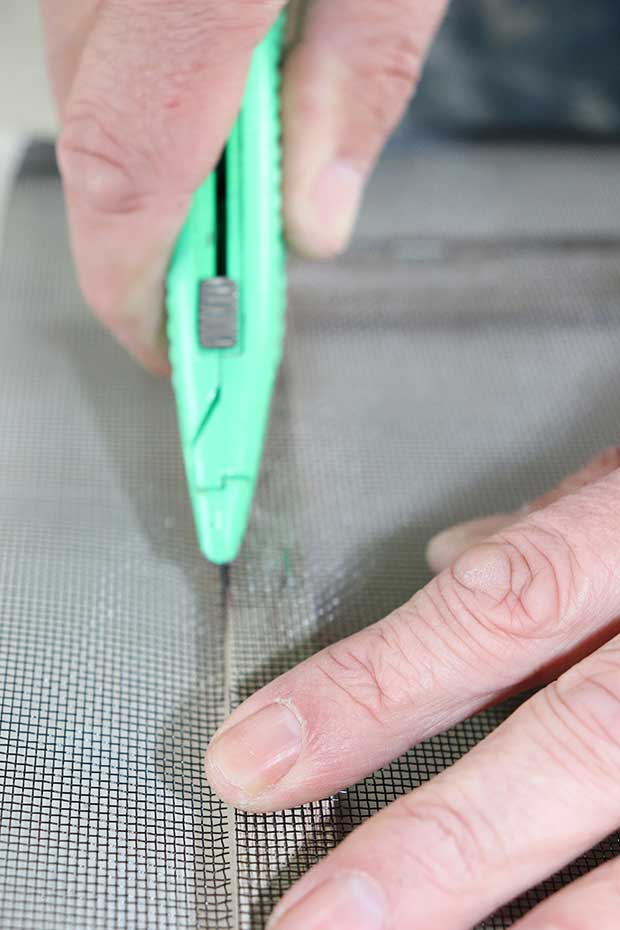
STEP 4. Use lengths of duct tape to cover sharp edges of mesh.
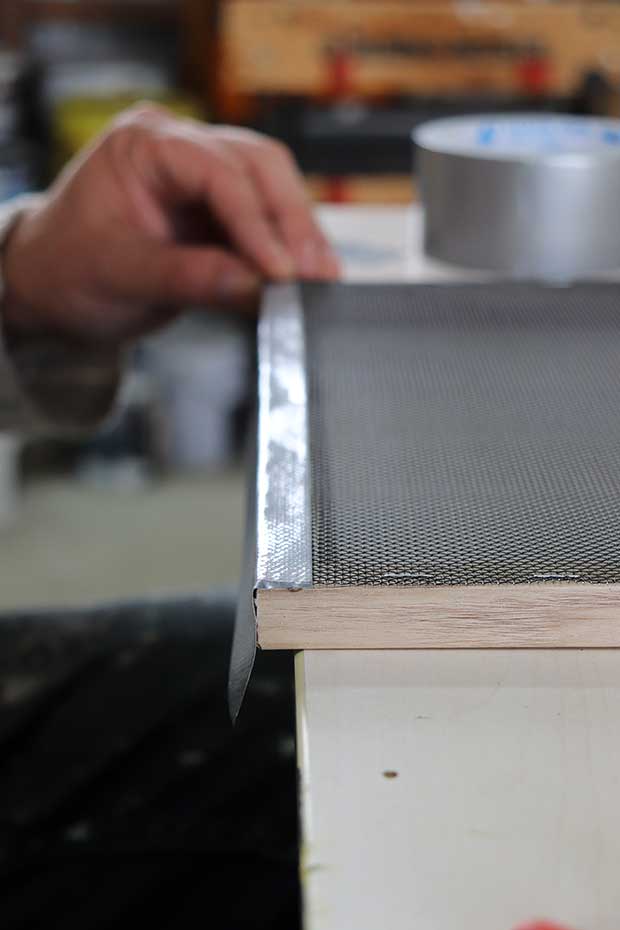
STEP 5. One the second frame, flat side up, screw small wedges of wood to the sides with a small overhang. This becomes the mould.
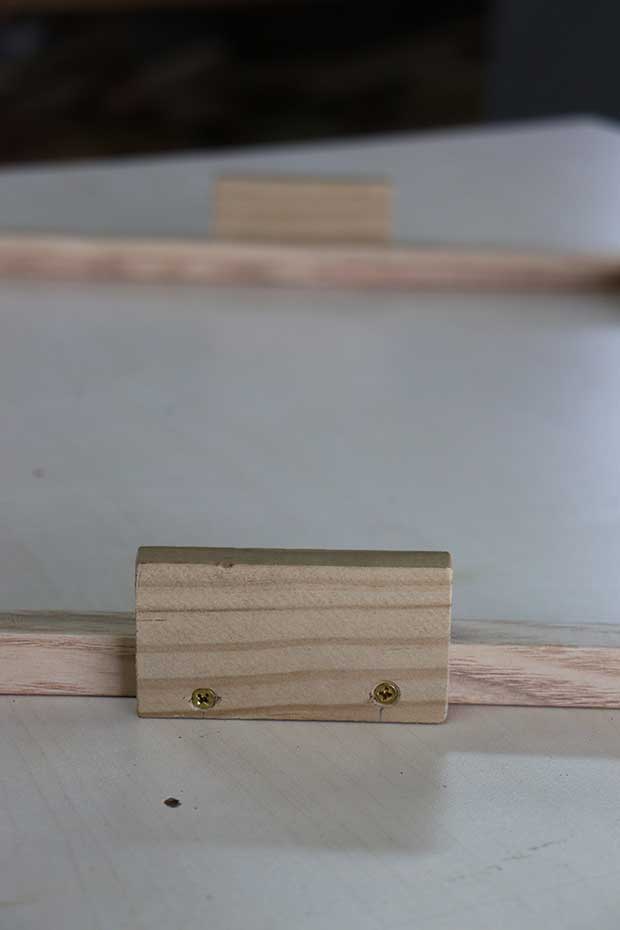
STEP 6. Place the deckle (frame with mesh) facing up, then place mould (with wedge blocks) on top, flat sides touching. The wedge blocks help to keep the mould secure to the deckle without unnecessary movement or displacement.
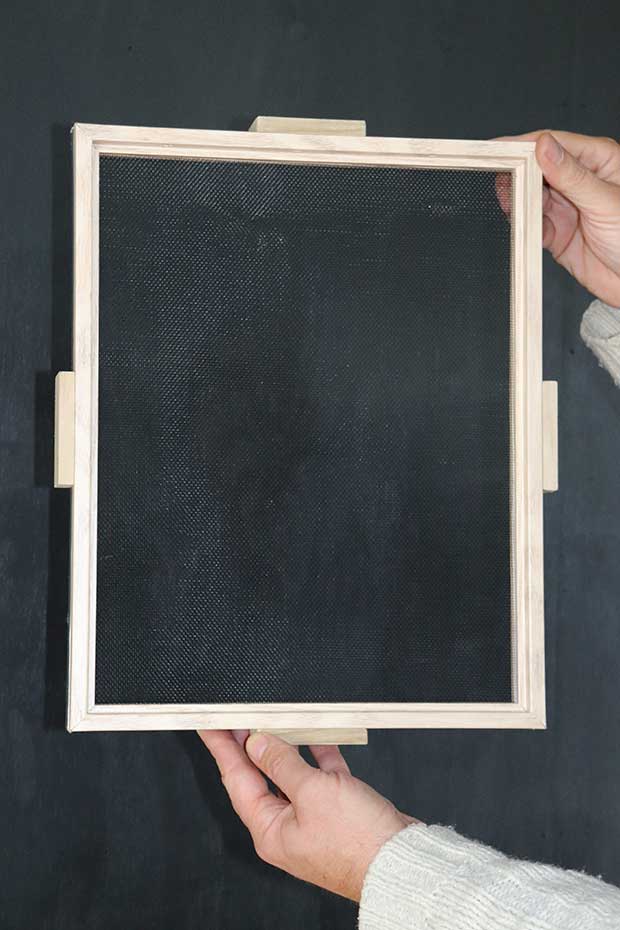
How to make handmade paper
STEP 1. Shred or cut recycled paper into small squares or lengths.
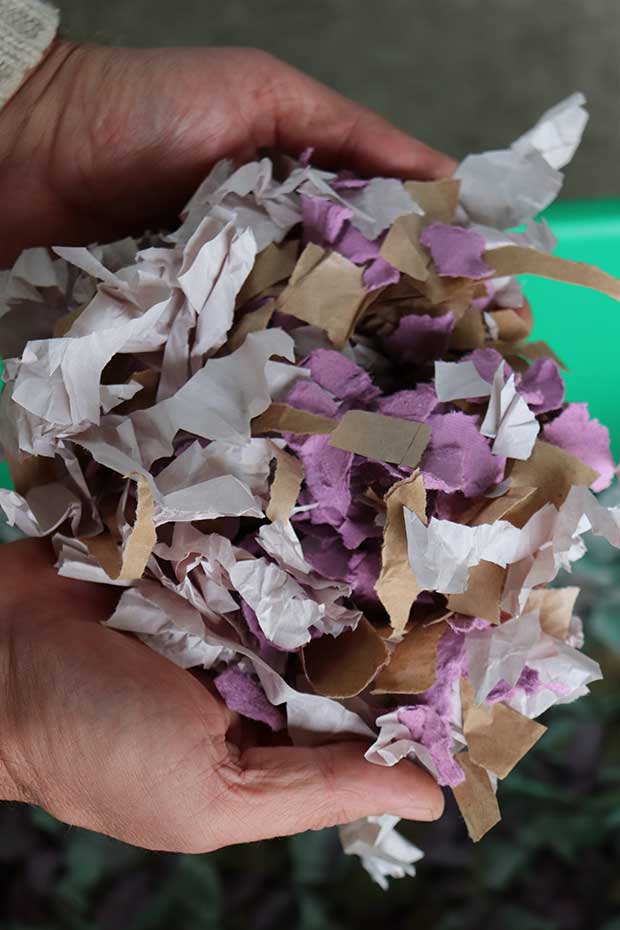
STEP 2. In a food processor or ‘kitchen wizz’, half fill with water then top with generous handfuls of shredded paper.
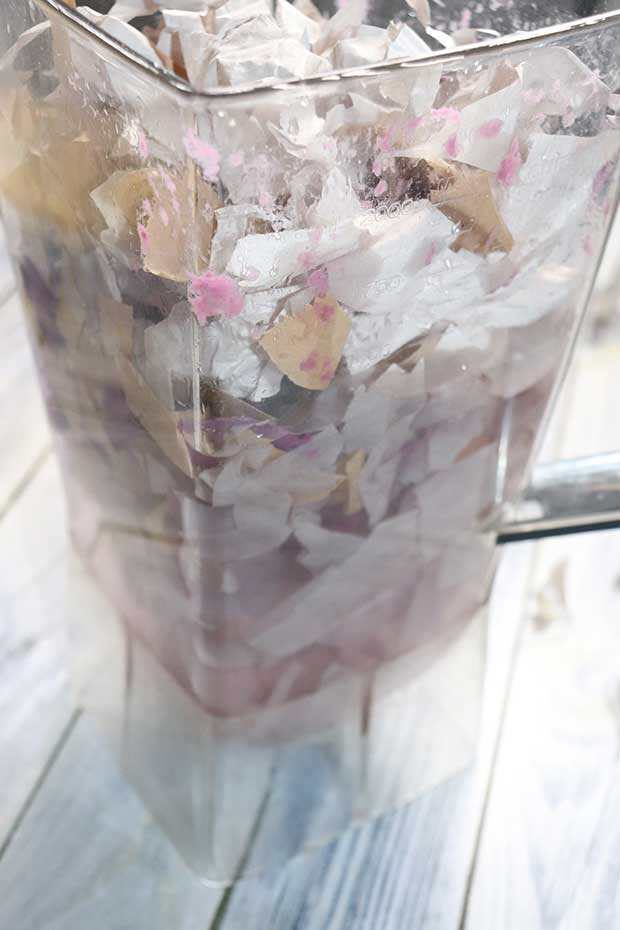
STEP 3. Blitz until the paper slush forms a pulp, approximately 30 seconds. If the paper is to be of fine texture, continue blending until the shredded paper has reached the desired look. Transfer pulp into a bowl and continue to blend more batches of shredded paper.
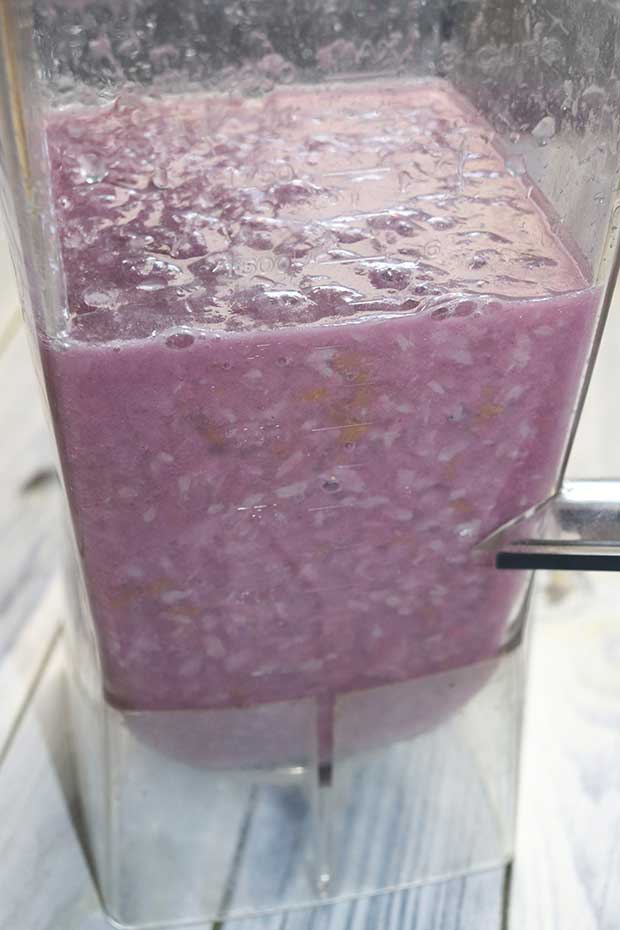
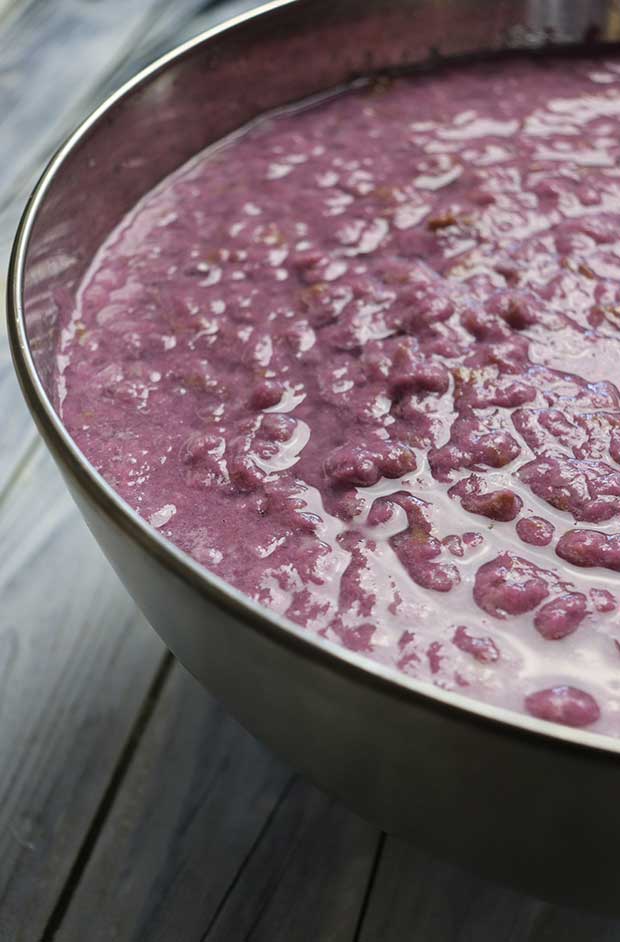
STEP 4. Partially fill a large tub with water, approximately one third full. Mix in a 3-4 cupfuls of paper pulp and combine well into a very watery slurry. Mix well.
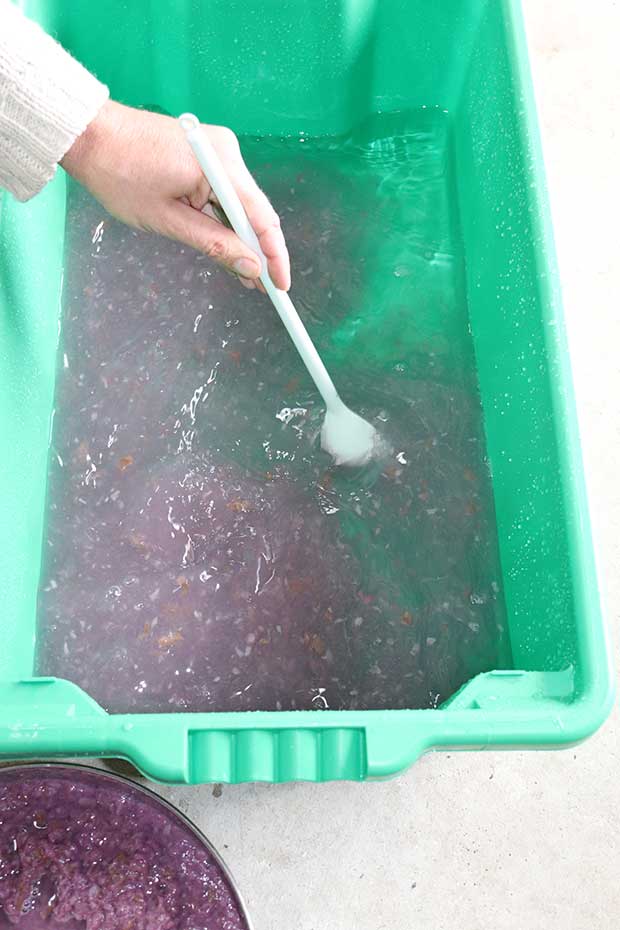
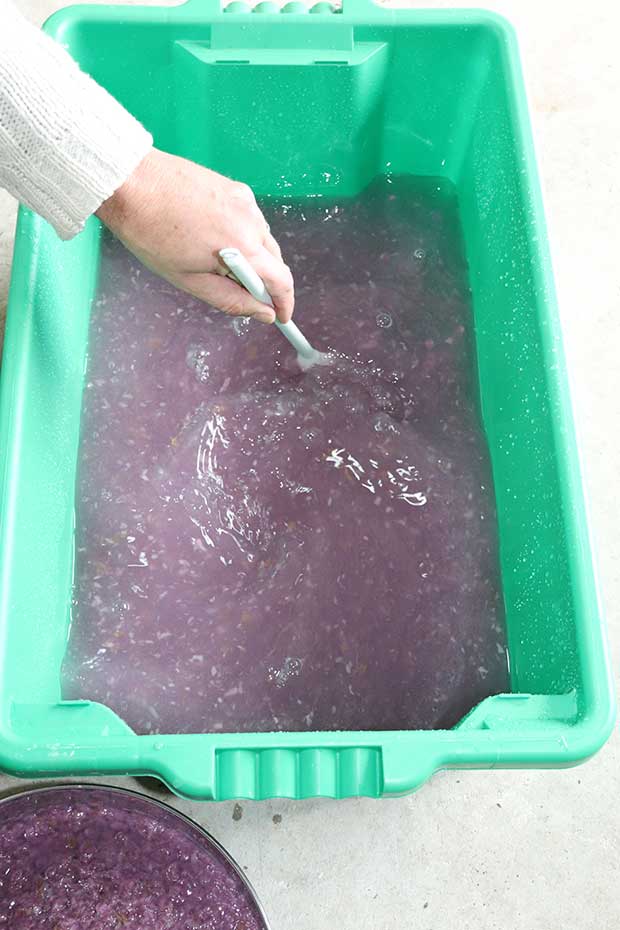
STEP 5. Hold the sides of the mould and deckle and dip one edge vertically into the water slurry. With a gentle movement, scoop into the water so frames are horizontal and submerged.
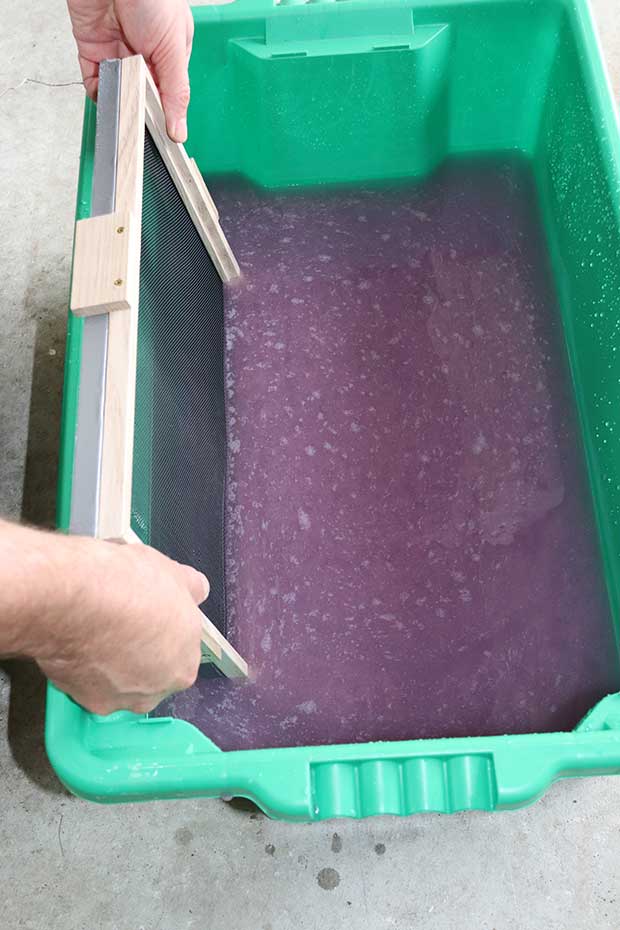
STEP 6. Gently move the frames from side to side underwater to disperse the pulp, then slowly raise the frames to the surface. There should be no mesh exposed and an even cover of pulp should be present. If too thin – add more and repeat the dipping process. If too thick – add more water to the slurry.
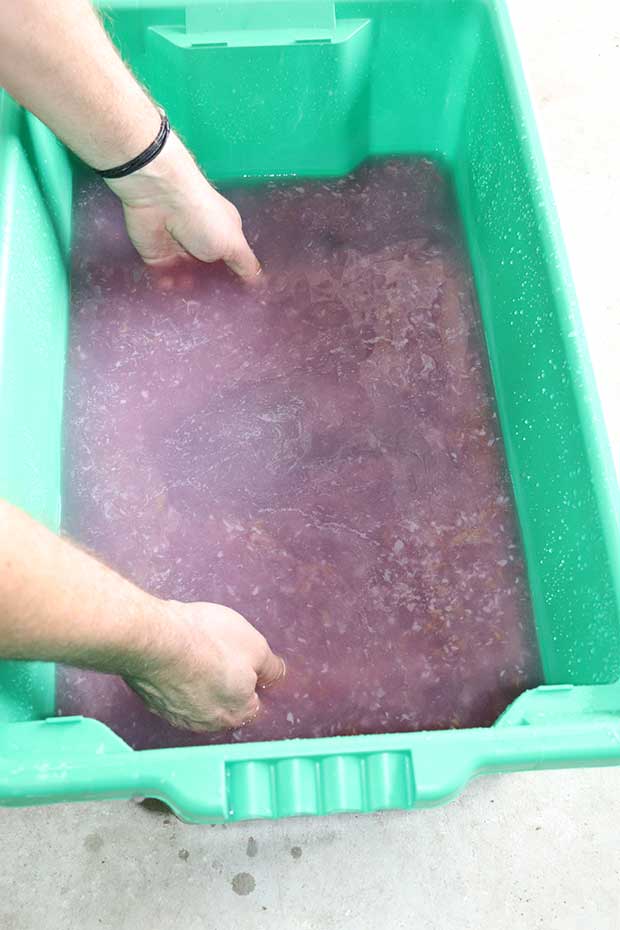
STEP 7. Completely remove the frames from the slurry and drip dry for 30 seconds on the side of the tub.
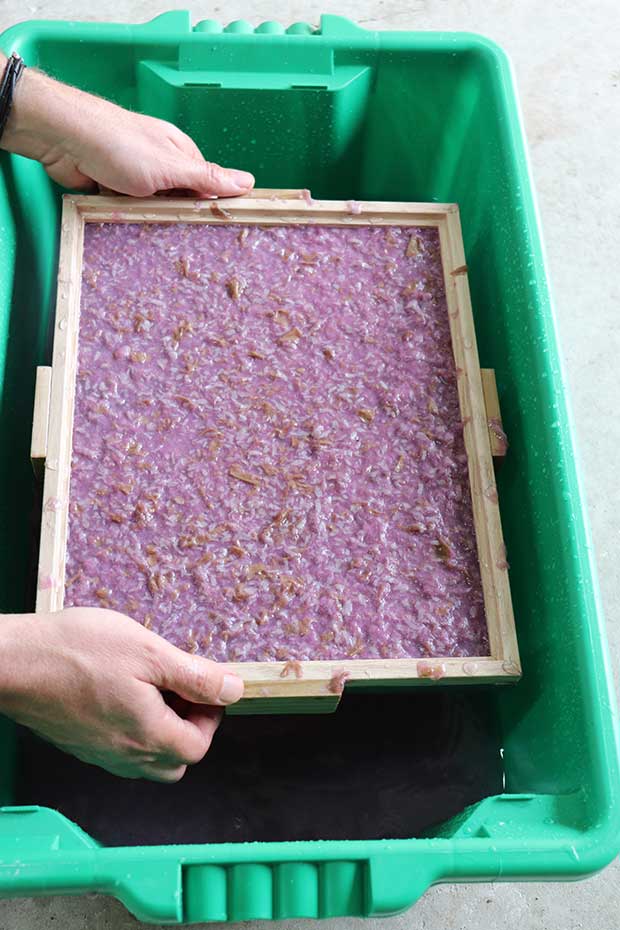
STEP 8. Carefully remove the top frame (the mould) to expose the wet pulp on the meshed frame.
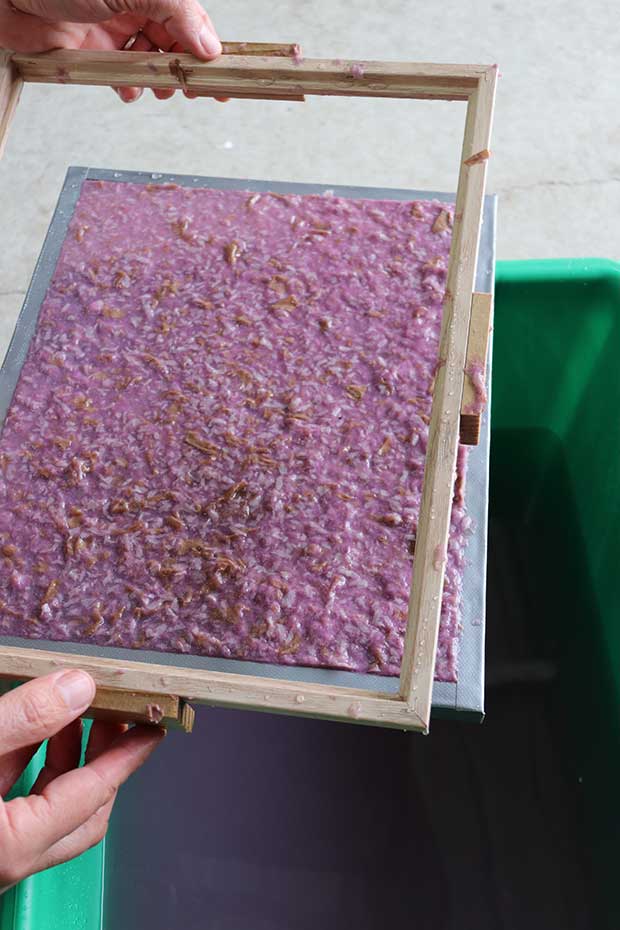
STEP 9. Flip meshed frame over onto grease-proof paper. The wet pulp will stick to the mesh.
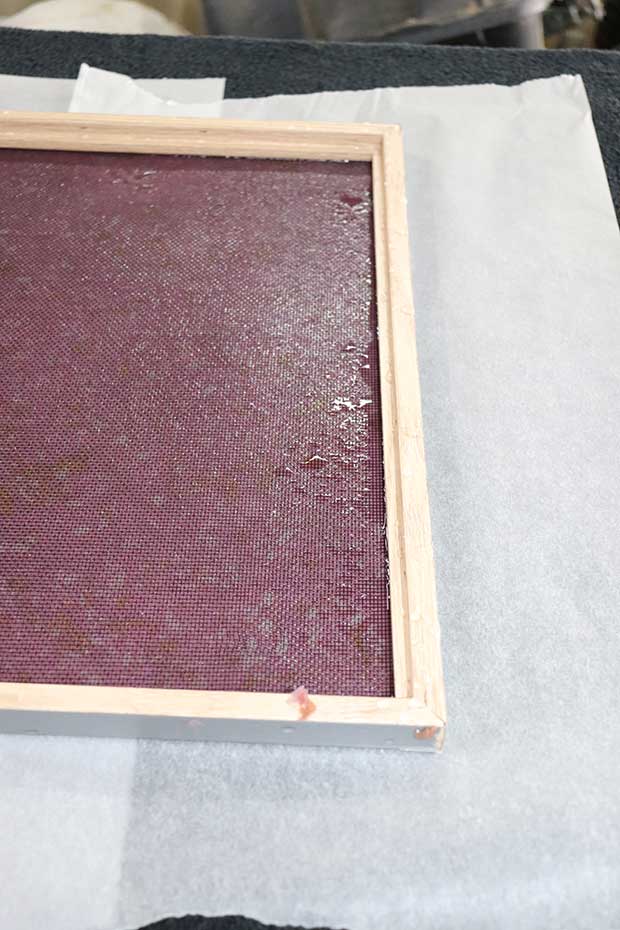
STEP 10. Use a dry cloth to extract excess moisture through the back of the mesh. Push deckle down firmly and wring out the cloth regularly. Remove the deckle to expose the wet paper. If the deckle does not come away cleanly, continue to extract excess moisture with a cloth.
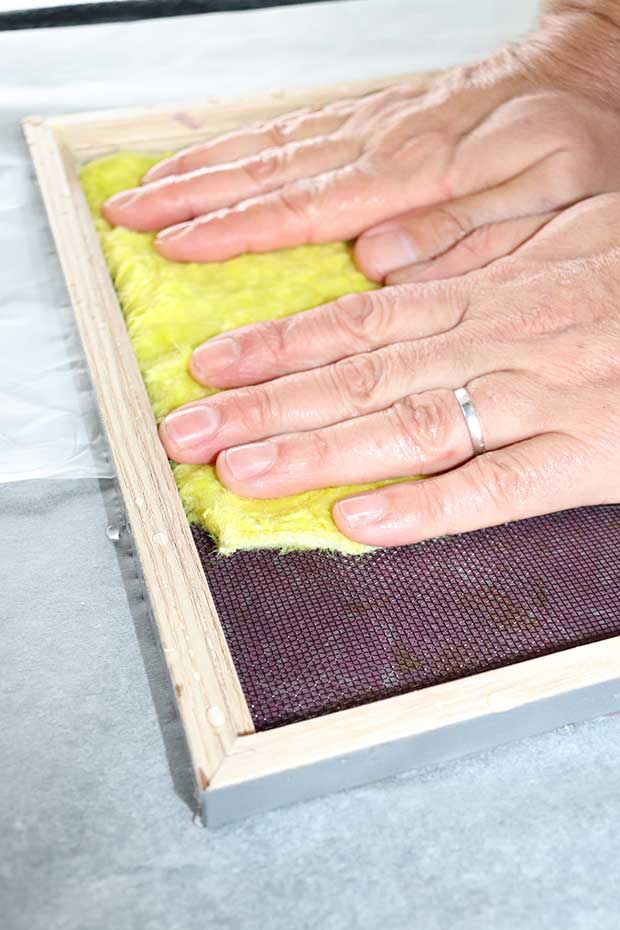
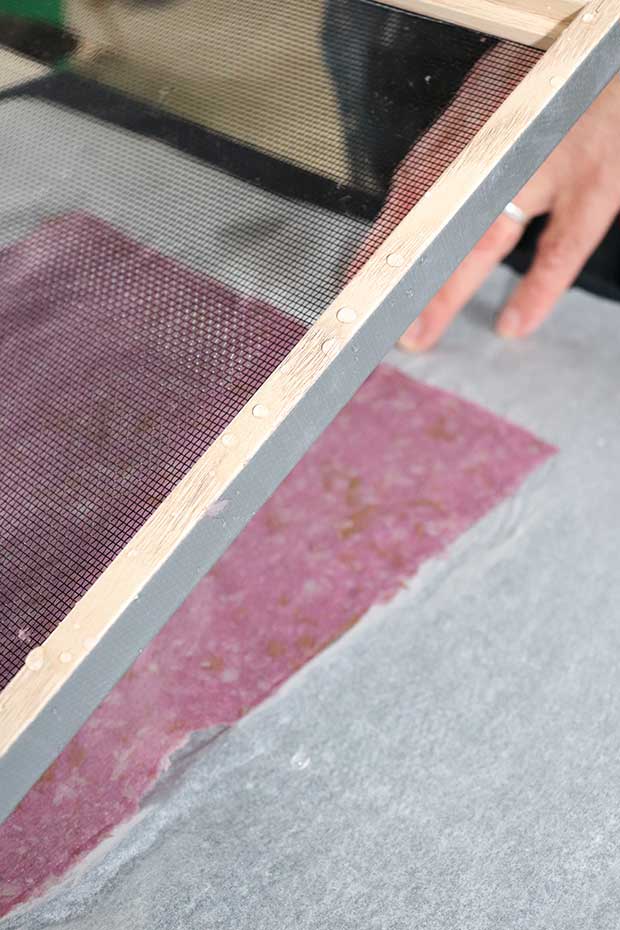
STEP 11. Press wet paper surface to a clean glass surface (a kitchen window, or the glass the frame once came with) and gently peel away the grease-proof paper.
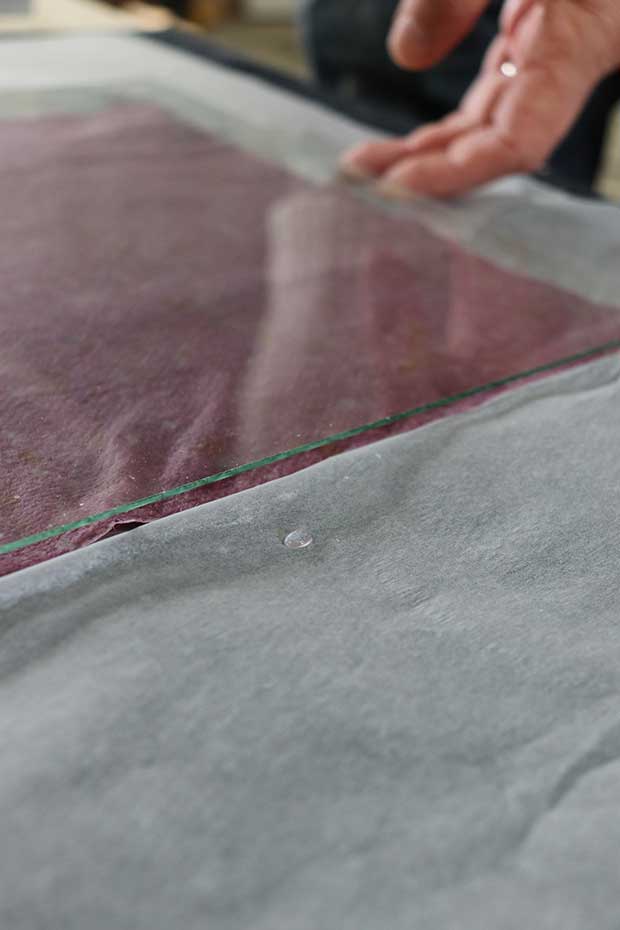
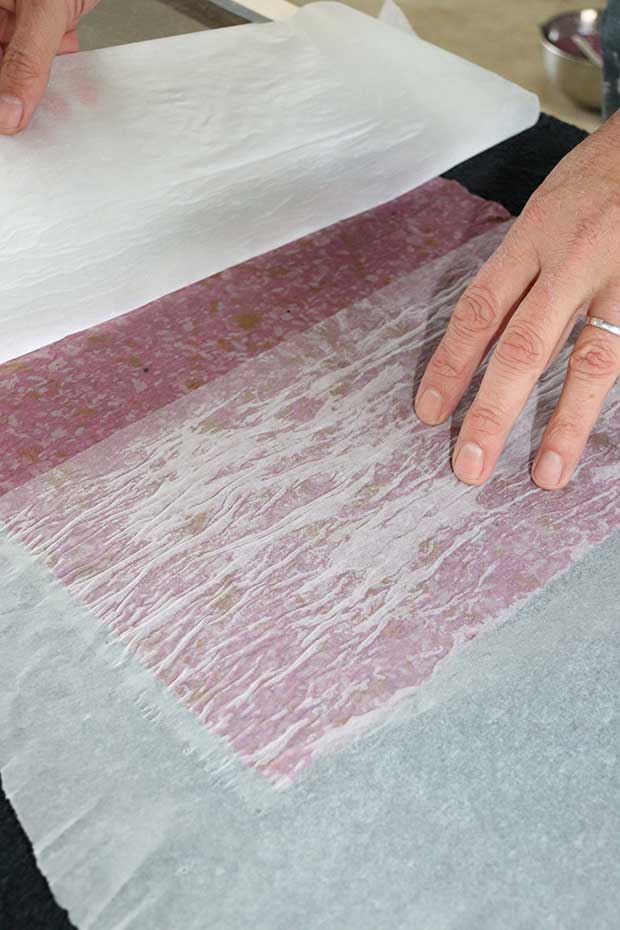
STEP 12. Allow wet paper to dry on glass surface for 1-2 days. This can be sped up with warm temperatures such as a sunny day or a hot water cupboard.
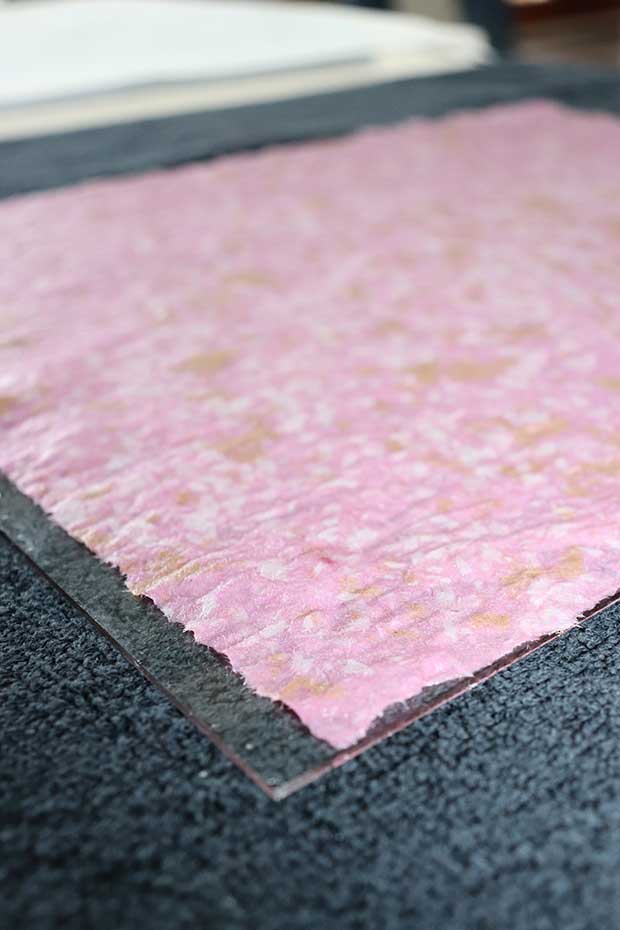
STEP 13. Peel from glass surface.
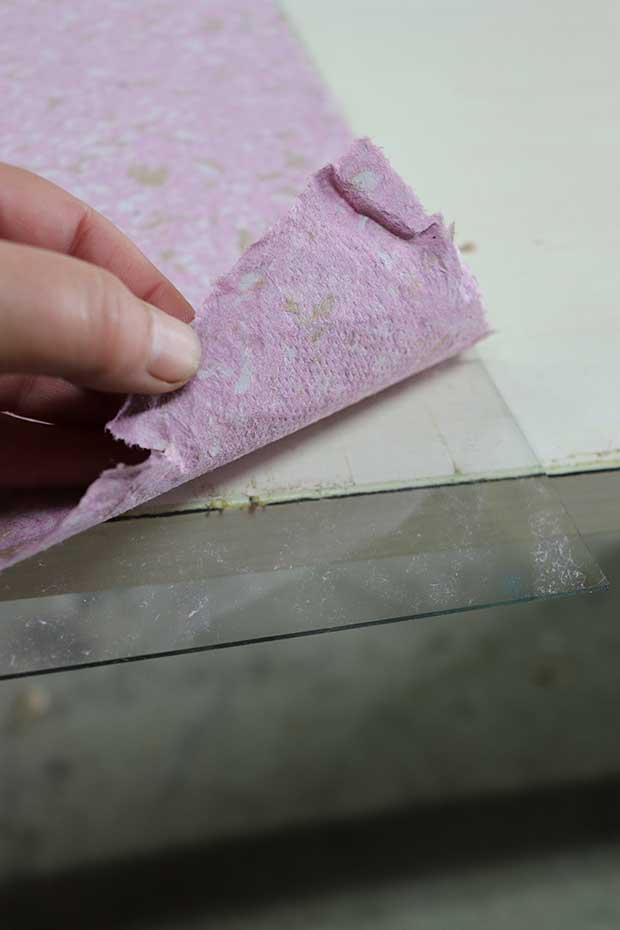
STEP 14. Create your own handmade paper stationery.

How the Papermill in Whangarei make beautiful paper from plant fibres and recycled cloth

